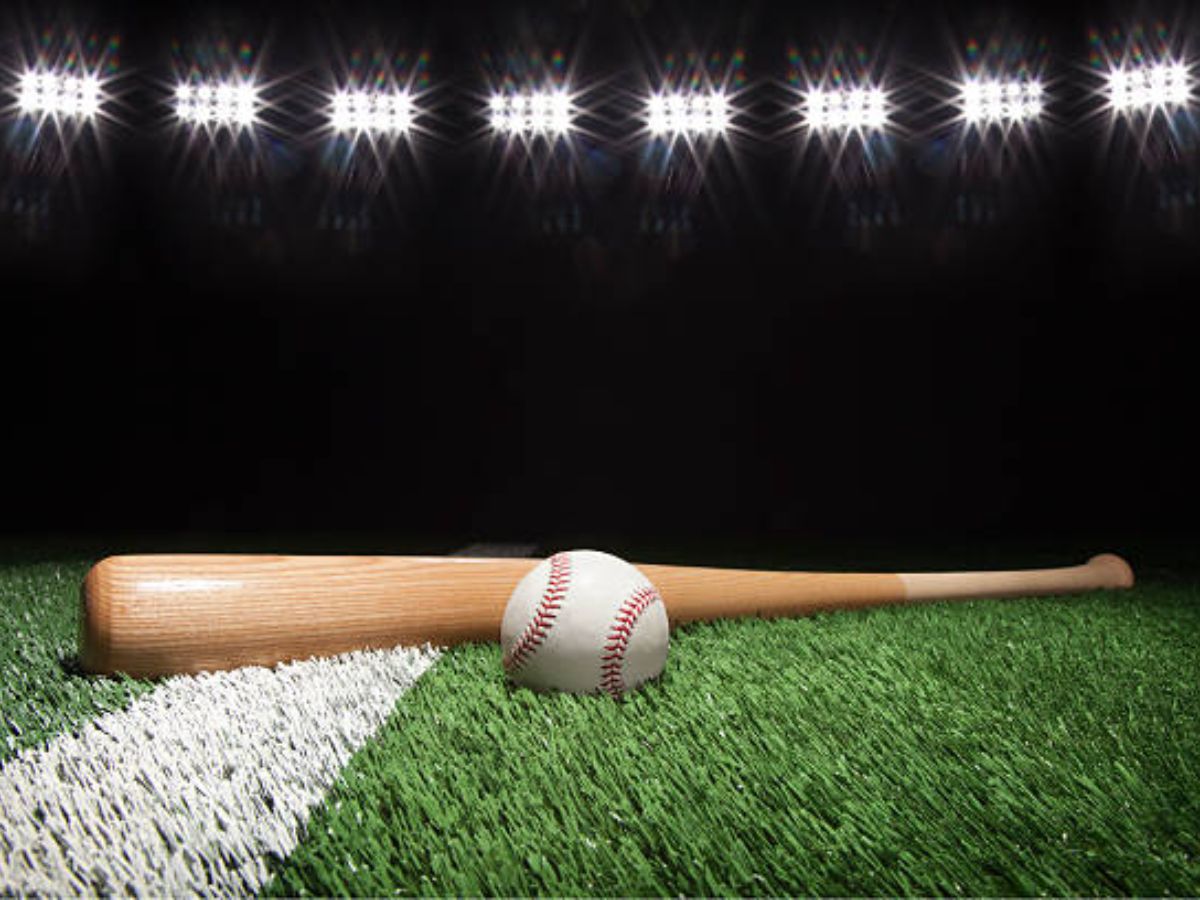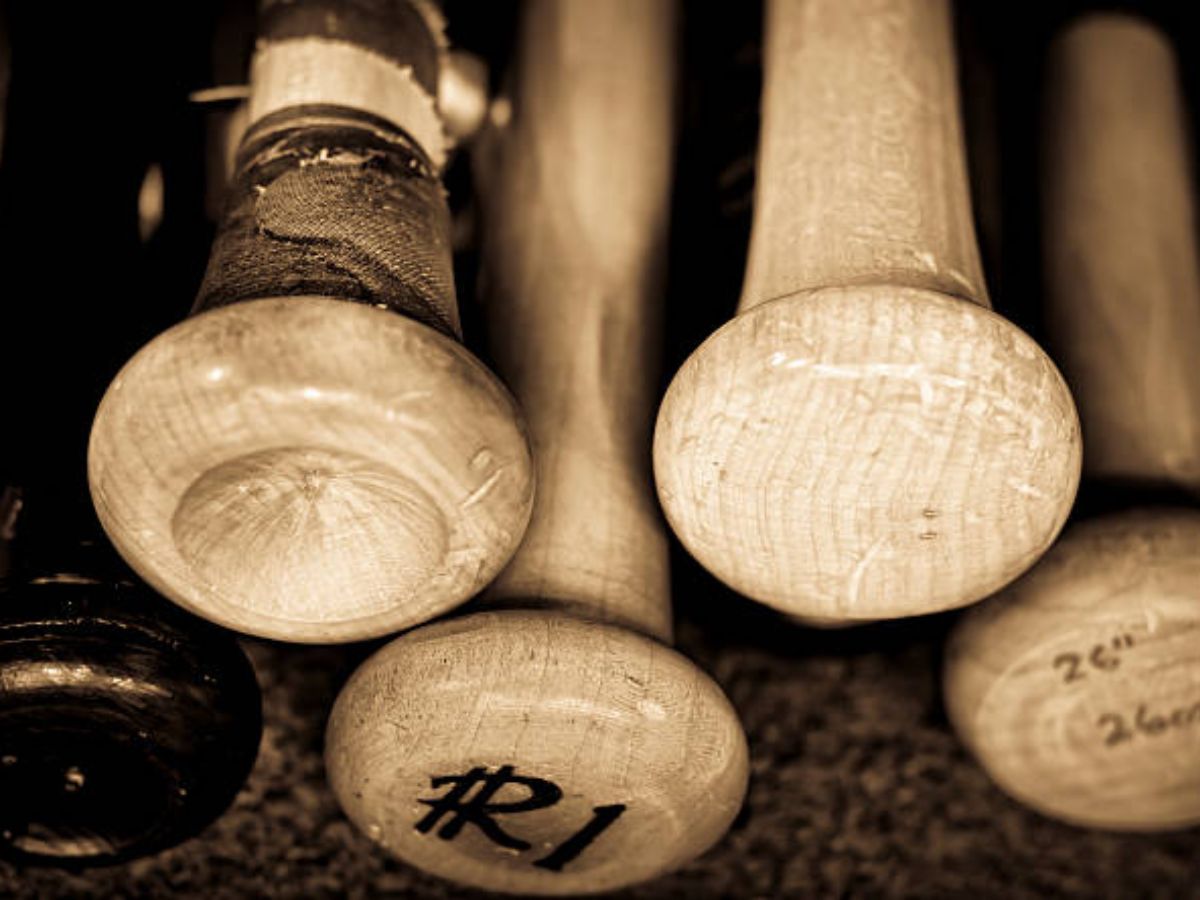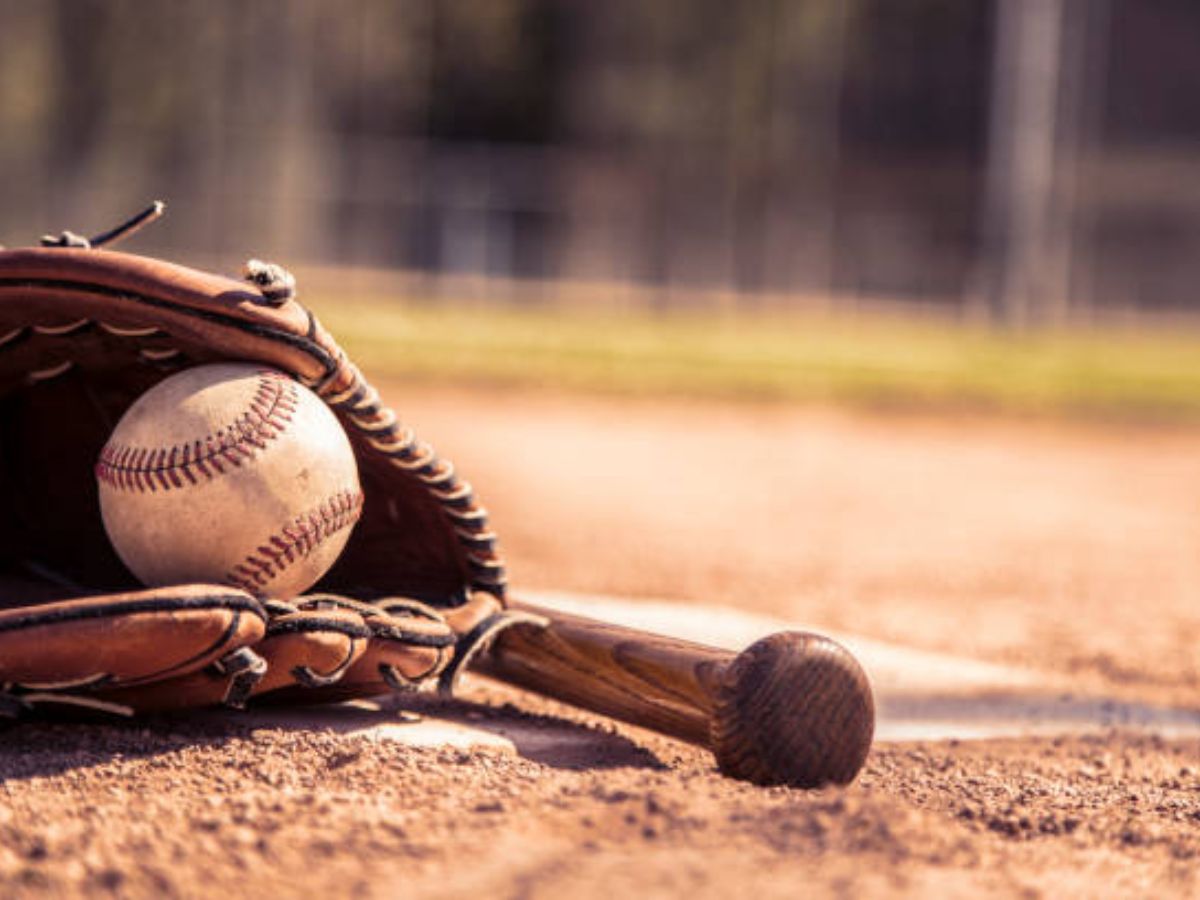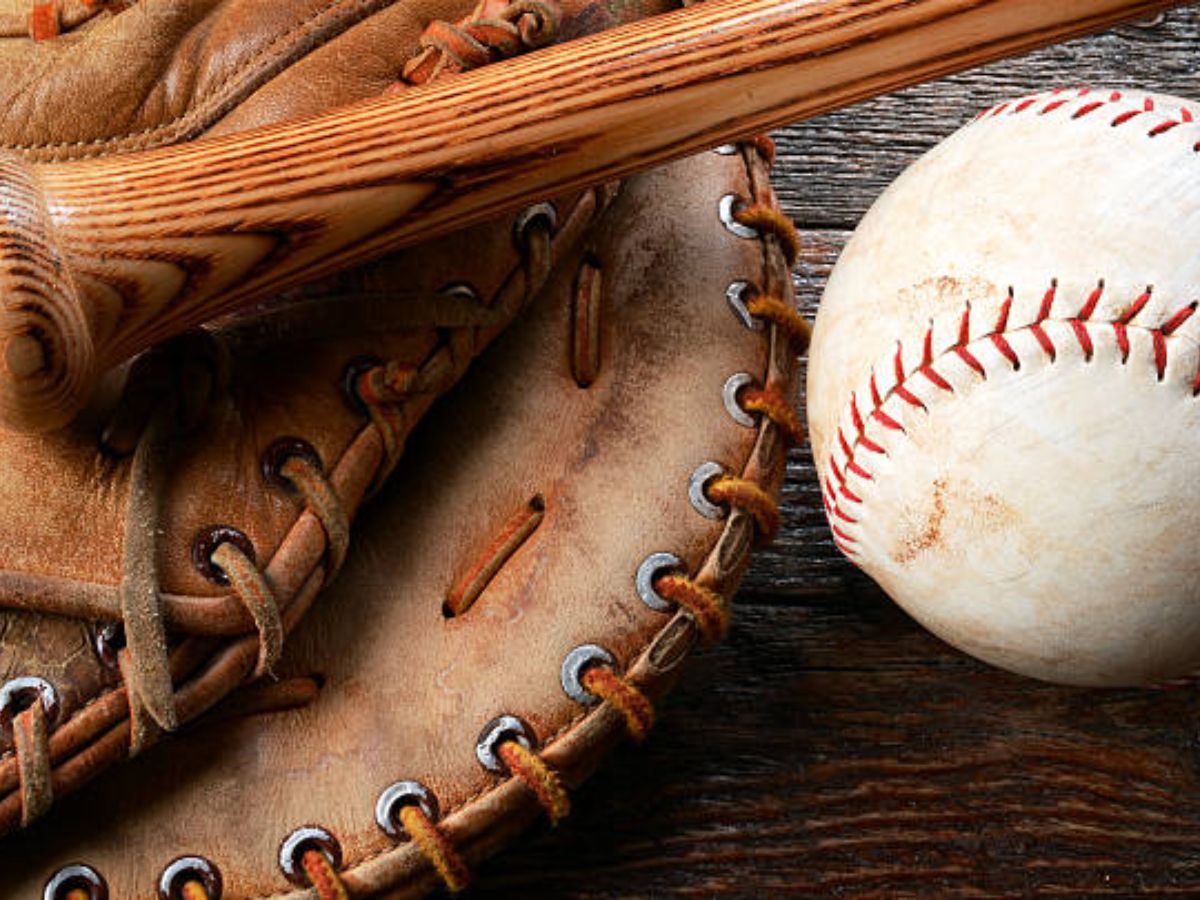
Baseball bats are commonly made of wood, such as ash, maple, or birch. Baseball, a beloved American sport, wouldn’t be the same without its iconic tool, the baseball bat.
Every player knows the thrill of stepping up to the plate, gripping the smooth, sturdy handle of a well-crafted bat. Have you ever wondered what wood baseball bats are made of? The answer lies in the quality and performance of the three most popular types of wood used: ash, maple, and birch.

Each wood has its unique characteristics, influencing factors like weight, durability, and feel. We will explore these different woods and shed some light on the artistry and craftsmanship behind the creation of high-quality baseball bats. So, let’s dive in and uncover the fascinating world of baseball bat materials.
Contents Inside
Different types of wood are used in baseball bats, each with its own pros and cons. Maple wood offers a dense and hard composition, providing excellent durability and strength. Ash wood, on the other hand, lends itself to flexibility and a lightweight feel, making it easier to swing.
Birch wood combines the qualities of both maple and ash, offering a balance of durability and flexibility. Maple bats are preferred by power hitters for their solid feel and the ability to generate more power. Ash bats are popular among contact hitters due to their lightweight nature and enhanced swing speed.
Birch bats are a versatile choice with the benefits of both maple and ash wood. When choosing a baseball bat, it’s essential to consider the characteristics of each wood type and match them with your playing style and preferences.
Maple wood is the go-to choice for power hitters, thanks to its outstanding characteristics. This type of wood offers excellent durability and a solid feel, ideal for handling powerful swings. Maple bats are known for their dense grain structure and less flex, providing substantial power transfer upon contact with the ball.
They tend to be heavier compared to other wood types, allowing for more power behind each hit. However, it is crucial to consider the disadvantages as well. Maple bats are prone to have a higher chance of breaking, especially on mishits.
Comparatively, other wood types, such as ash or birch, offer more forgiveness and flex. When evaluating the advantages and disadvantages, maple wood still stands out for power hitters seeking maximum pop and a satisfying crack of the bat.
Ash wood is a traditional and versatile option for crafting baseball bats. Known for its durability and flexibility, ash wood has been a go-to choice for many players. Its distinct features include a straight grain pattern and light weight, making it easier to swing.
The benefits of using ash wood bats include increased hitting distance and better overall performance. However, there are some drawbacks to consider. Ash wood bats are more prone to breakage compared to other wood types, such as maple. Additionally, they can be affected by the weather, which can impact their performance.
When comparing ash wood bats to other options, it’s important to weigh the pros and cons based on personal preferences and playing style. Ultimately, the choice of wood for a baseball bat comes down to individual preference and the specific needs of each player.
Birch wood baseball bats offer the best of both worlds. With its unique characteristics, birch wood bats provide advantages and disadvantages. Compared to other wood types, birch wood is known for its durability and flexibility. It provides a solid feel and great pop, making it a popular choice among players.
However, birch wood bats may be prone to flaking and less consistent performance. When it comes to performance, birch wood bats are often compared to maple and ash bats. Maple bats are harder with a bigger sweet spot, while ash bats are lighter and more flexible.
In conclusion, birch wood bats offer a balanced option for players, combining the benefits of other wood types.
Choosing the right wood baseball bat depends on several factors. Player skill level and style of play are essential considerations. Weight and balance play a crucial role in determining the bat’s performance. Durability and flexibility are also important factors to ensure the bat’s longevity.
Additionally, one must consider the regulations and league requirements to ensure compliance. It is crucial to select a bat that suits the player’s needs and preferences, as different woods offer varying qualities. Factors such as ash, maple, and birch wood should be evaluated to find the perfect match.

By taking these factors into account, players can make an informed decision when selecting the wood for their baseball bat.
Player skill level and style of play play a crucial role in determining the ideal wood bat for a baseball player. Different skill levels require specific wood bat recommendations. Players must ensure that their bat choice aligns with their play style to maximize performance on the field.
Tailoring the bat choice to their individual play style can greatly impact a player’s success. Examining case studies of player profiles can provide valuable insights into the correlation between bat selection, skill level, and style of play. By considering these factors, baseball players can make informed decisions when choosing the wood bat that suits their needs, ultimately enhancing their overall gameplay experience.
Baseball bats are commonly made of wood, with different types offering varying weight and balance. Understanding swing weight is crucial for players looking to make the right choice. When selecting a weighted bat, it’s essential to find the right balance between power and control.
This ensures that your swing will be effective and accurate. The weight of the bat plays a significant role in generating power, but it should also be balanced to provide control and maneuverability. It’s important to experiment with different bat weights to find the one that suits your swing style and maximizes your performance.
By finding the perfect weight and balance, you can enhance your hitting skills and excel in the game of baseball.
A baseball bat’s durability and flexibility are key factors to consider when evaluating wood bat options. The durability of a bat determines how long it will last and withstand the impact of repeated hits. Different types of wood, such as ash, maple, and birch, vary in their durability and performance.
Evaluating the wood treatments used on a bat can also help determine its durability. Proper maintenance, including regularly sanding and applying a protective finish, can extend the lifespan of the bat. Flexibility plays a crucial role in a bat’s performance, affecting the speed and power of hits.
Bats with more flexibility tend to have a larger sweet spot, making it easier to connect with the ball. It’s important to understand the balance between durability and flexibility to find the right wood bat for optimal performance.
Baseball bats are subject to strict regulations and league requirements, particularly concerning the type of wood used. Different leagues impose specific rules to ensure player safety and fair play. Approved wood bats that adhere to safety standards are crucial in maintaining the integrity of the game.
League regulations outline which wood types are permissible, taking into consideration factors like durability and performance. Some leagues may even conduct case studies to assess the impact of different wood types on the game. These studies help shape policies and ensure that all players are using appropriate and safe equipment.
So, when it comes to selecting a baseball bat, understanding the league regulations on wood types is essential for any player or team. By following these guidelines, players can compete confidently with bats that meet the league’s standards.
A baseball bat’s wood selection is crucial to finding the right fit. Assessing personal preferences is key, considering factors such as player profile, budget, and longevity. Player profile should be carefully evaluated when selecting a baseball bat. Additionally, considering one’s budget is important to ensure affordability.
Moreover, the bat’s longevity should be taken into account to maximize its lifespan. By carefully assessing these factors, players can identify the perfect baseball bat match for their needs. Whether it’s the type of wood used or the overall construction, every detail matters in finding the ideal baseball bat.
So, gather information, compare options, and make an informed decision for your next game.
Assessing personal preferences is crucial when selecting a baseball bat. Grip preferences, such as thin or thick handles, play a significant role in one’s comfort and control while swinging. Additionally, the barrel diameter is another essential factor to consider. Traditional bats with their narrower barrels offer more precision, while big barrel bats provide broader hitting surfaces.
Finally, the design of the bat knob can also impact performance. Tapered knobs offer a more secure grip, while flared knobs allow for additional comfort. By carefully examining these aspects, players can choose a wood type that suits their individual needs and enhances their performance on the field.
So, whether you prefer thin or thick handles, traditional or big barrel bats, or tapered or flared knobs, your personal preferences will guide your decision.
Baseball bats are typically made of various types of wood, including ash, maple, and birch. The type of wood used can greatly impact a player’s performance. For power hitters, a bat made of maple is usually recommended, as it is known for its dense and hard characteristics.
This allows power hitters to generate more force and hit the ball with greater distance. On the other hand, contact hitters often prefer bats made of ash due to their lightweight and flexible nature. Ash bats offer better bat control and the ability to make solid contact with the ball.
For those looking for a balanced all-around bat, birch is a popular choice. It combines the best qualities of both ash and maple, providing a good balance of durability and flexibility.
Wood is a key factor when considering budget and longevity of baseball bats. Different wood types come with varying price ranges that influence the overall investment. Additionally, it’s important to understand the lifespan of wood bats to ensure the best value.
Maple bats, for example, are renowned for their durability and increased longevity. These bats also tend to have a higher price range. On the other hand, ash bats offer a more budget-friendly option with a good balance of durability and flexibility.

Birch bats fall in between maple and ash in terms of pricing and performance. Considering the pricing ranges for different wood types helps tailor your investment to your needs. Ultimately, understanding the wood choices available ensures you make an informed decision when it comes to purchasing a baseball bat.
Baseball bats are typically made from Ash, Maple, or Birch wood. Each type has its own unique qualities that affect the bat’s performance, such as durability, flexibility, and hardness.
Baseball bats are not made from metal because they could cause serious injuries if a player gets hit by a metal bat. Wooden bats have more give and absorb impact better, making them safer for both players on the field and spectators.
Yes, there are regulations set by official baseball organizations, such as Major League Baseball, regarding the type of wood allowed for baseball bats. These regulations ensure fairness and safety by specifying the dimensions, weight, and type of wood that can be used in professional baseball.
Wooden baseball bats offer several advantages over their aluminum or composite counterparts. They provide a more traditional feel and sound, allow players to better feel the ball on impact, and can be customized to suit a player’s preferences. Additionally, using a wooden bat can help improve a player’s overall strength and swing mechanics.
Wooden baseball bats have a rich history in the game of baseball, and the type of wood used plays a crucial role in the performance and durability of the bat. Different types of wood have their own unique characteristics, such as ash bats being known for their flexibility and maple bats for their hardness.
However, it’s important to note that not all wood is created equal when it comes to baseball bats. Proper care and maintenance are essential to preserve the longevity of your wooden bat. Keeping it away from extreme temperature fluctuations and being mindful of its usage will go a long way in ensuring its performance and durability.
So whether you’re a professional player or just a fan of the sport, understanding the wood used in baseball bats can deepen your appreciation for the game and the craftsmanship behind it. Choose the right wood, and you’ll be swinging for the fences with confidence.
Let’s Build
Contact us todayGet daily tips and tricks for making your best home.
2025 The base Ball Insider